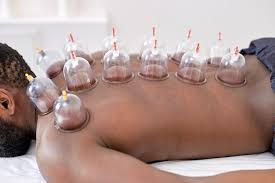Cupping therapy, an ancient practice rooted in traditional medicine, has gained modern popularity as a potential method for body detoxification. In this blog post, we will delve into the intricacies of cupping, its historical origins, the process involved, and the purported benefits it offers in the realm of detoxification.
Historical Roots:
Cupping has a rich history dating back thousands of years, with origins in various cultures including traditional Chinese medicine and ancient Egyptian, Greek, and Middle Eastern practices. Initially used to treat various ailments, cupping has evolved over time and found its place in the contemporary wellness landscape.
The Cupping Process:
Cupping involves placing special cups on the skin to create suction. These cups can be made of glass, silicone, or bamboo. The suction effect is typically achieved by heating the air within the cup or using a mechanical pump. As the cups cling to the skin, they draw underlying tissues upward, promoting blood flow and stimulating the release of toxins.
Detoxification Mechanism:
Proponents of cupping therapy argue that the suction created during the process helps to open up pores, enhance circulation, and facilitate the elimination of toxins through the skin. This is believed to contribute to the body’s natural detoxification mechanisms, promoting overall well-being. Cupping is often integrated into a broader rehabilitation plan that includes traditional physical therapy exercises, stretching, and other therapeutic modalities. Its role is complementary, aiming to enhance the overall effectiveness of the rehabilitation process.
While cupping has a long history and is embraced by many, scientific evidence supporting its effectiveness for detoxification is limited.
Benefits:
Cupping therapy provides lots of benefits, including improved blood circulation, reduction in muscle tension, and a boost to the body’s detoxification processes.
Before undergoing cupping therapy, individuals should be aware of potential side effects such as temporary bruising and skin discoloration. It’s crucial to consult with a qualified healthcare professional before trying cupping, especially for those with pre-existing health conditions.
Conclusion:
Cupping therapy, with its historical roots and contemporary resurgence, offers an intriguing avenue for those exploring alternative methods of body detoxification. While anecdotal evidence and cultural traditions support its use, more research is needed to firmly establish its scientific validity. As with any wellness practice, it’s crucial to approach cupping with informed awareness and consult healthcare professionals when in doubt.

